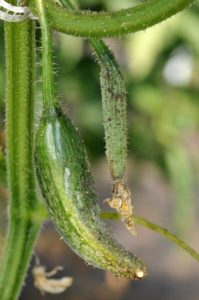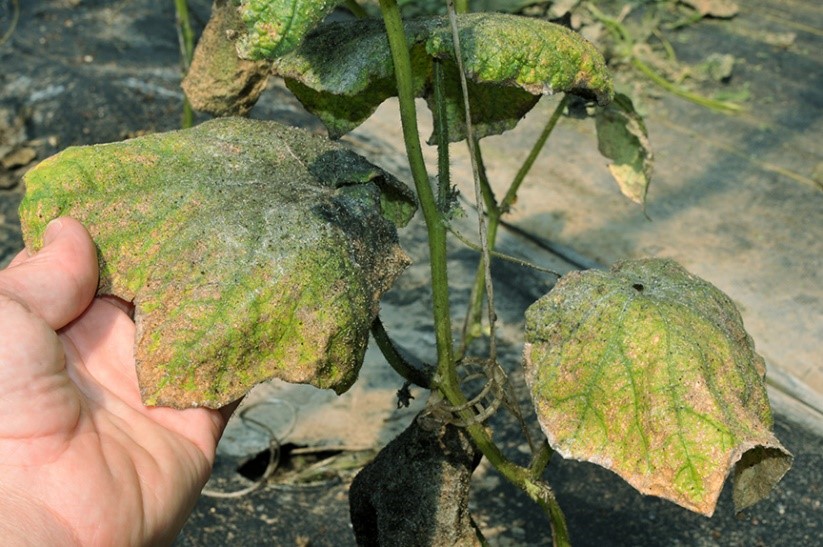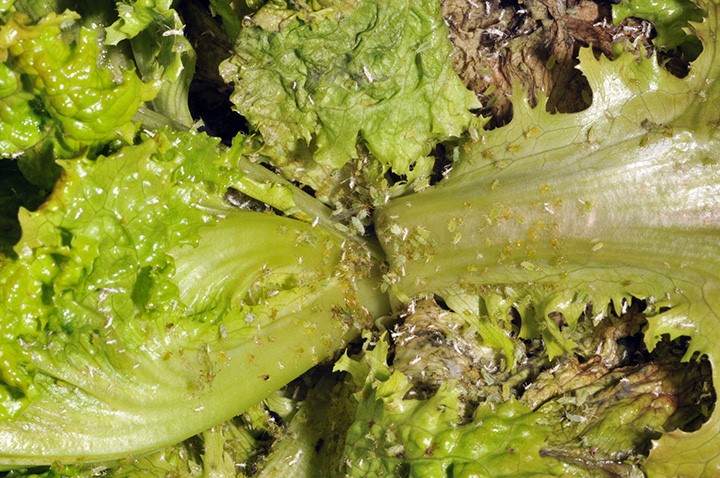It’s that time of year, where we are prepping high tunnels and getting back into the full swing of production, slowly, here in the Midwest. Many of you have already begun to transplant and may have encountered your first pests on these new crops. Aphids are one that remain a problem in high tunnels, and may even have plagued your winter production (Figure 1,2,3).
Some keys to preventing or controlling these pests rely first on sanitation and then careful scouting. Try to remove any green bridge material that may already be infested before transplanting into the space. This includes weeds, lingering winter crops or residues. Having a week without vegetative hosts should get rid of any overwintering residents. After transplanting scout diligently, at least weekly, or more often on susceptible young transplants. Aphid infestations tend to begin on the growing points or younger tissues of the plant. Be sure to look at the underside of leaves and in the growing point or leaf whorls. Mark infestations and watch to see if they are increasing between scouting events. On things like lettuces or other greens, the tolerance is low for this pest so having a plan in action when they are first detected is key. For things like cucumbers, you can typically tolerate higher levels of this pest.
However, at this point in the growing season there may not be the natural enemy pressures around to keep them at bay. If you intend to use biological control options, order them at the first detection of aphids in your crop. Less mobile predators, such as larval or egg forms, are less likely to escape the area you release them in. Orius insidiosus, the minute pirate bug, lacewings, or Adalia bipunctata lady beetles available as eggs, larvae or pupae may work well at this point in the season. Another, more mobile option, are any of the parasitoids. We have not evaluated this natural enemy in high tunnels but they do find their way into the systems on their own. Remember that parasitoids will leave behind the mummy carcass of the aphid and therefore may not be compatible with your crop.
For chemical options refer to the 2018 Midwest Vegetable Production Guide. If left unchecked aphids can kill young seedlings.


